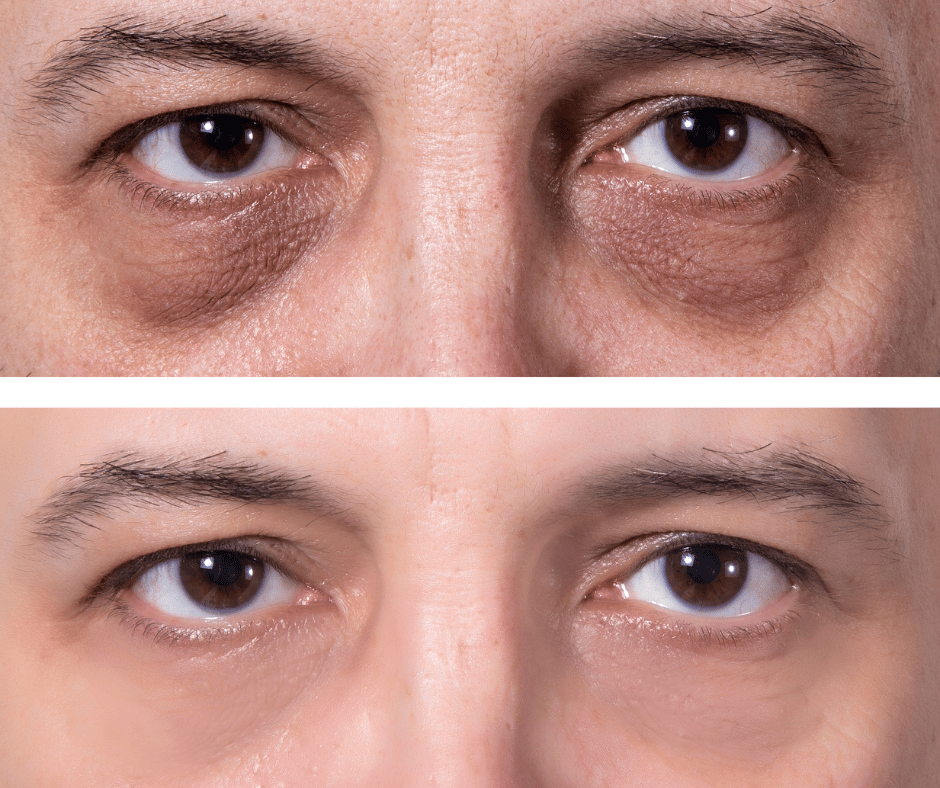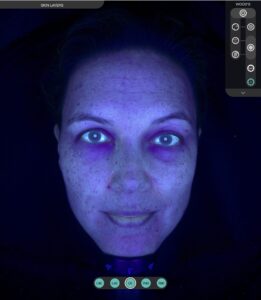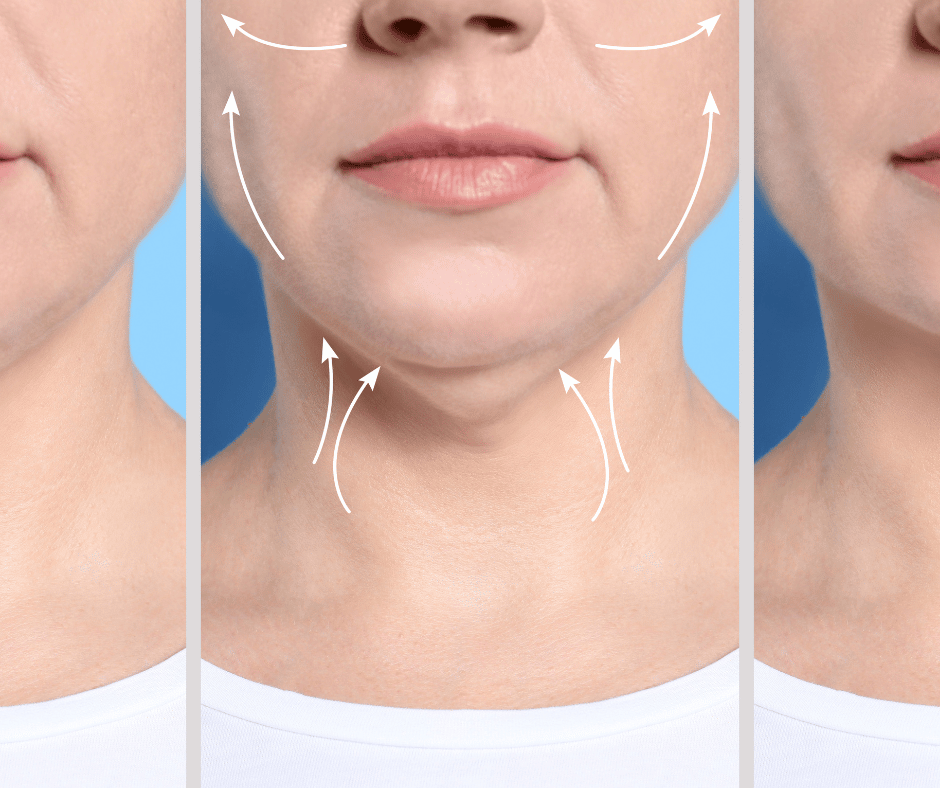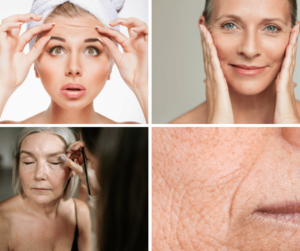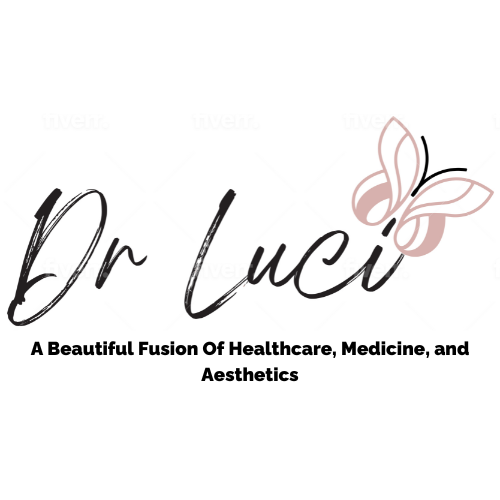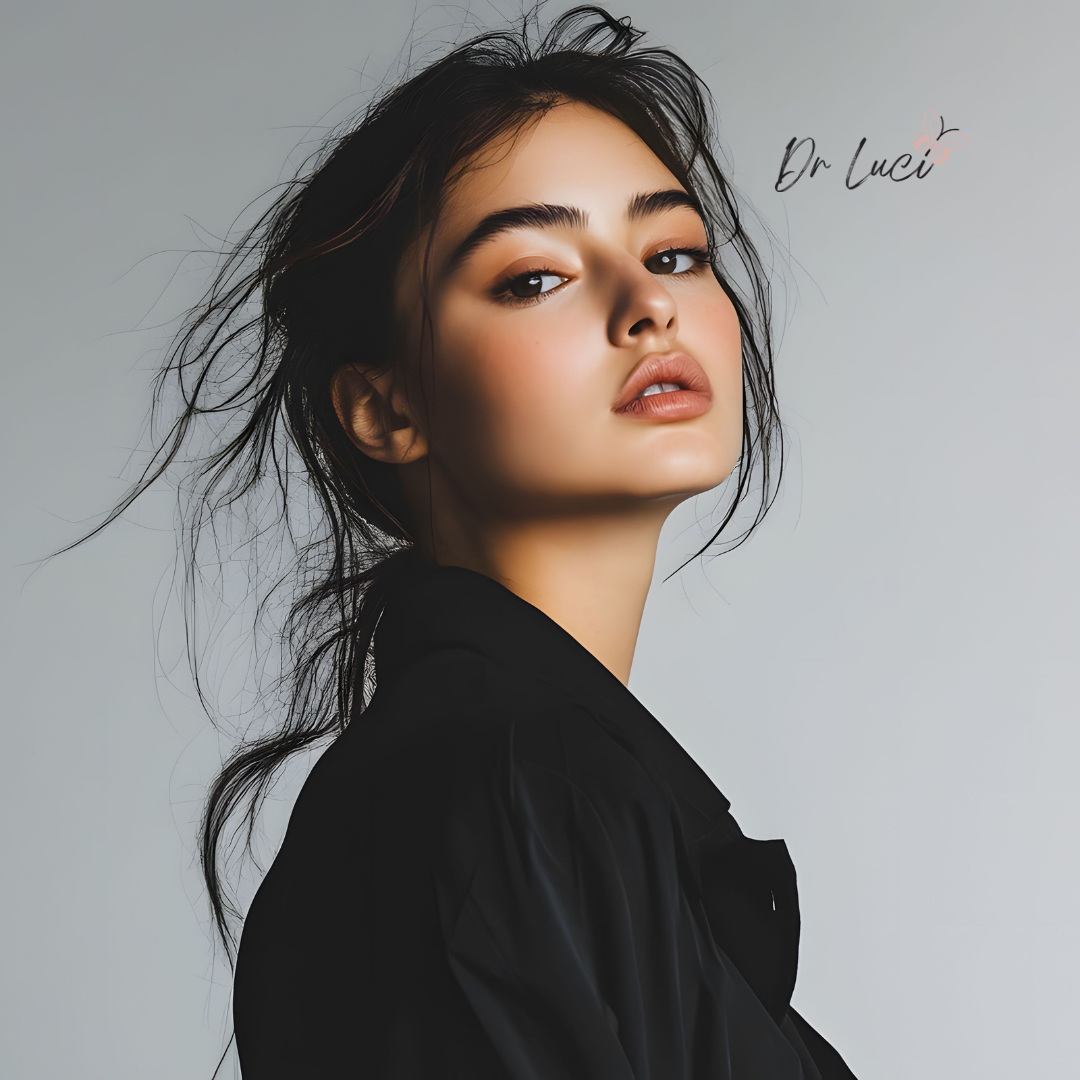Your Skin And Body Concerns
Many people experience concerns related to their skin or appearance. This section provides general information about common aesthetic and dermatological concerns
If you’re interested in learning more about available options or discussing what might be right for you, our practitioners are available to provide personalised advice. There is no obligation to proceed with any treatment that our team may recommend based upon your individual needs.
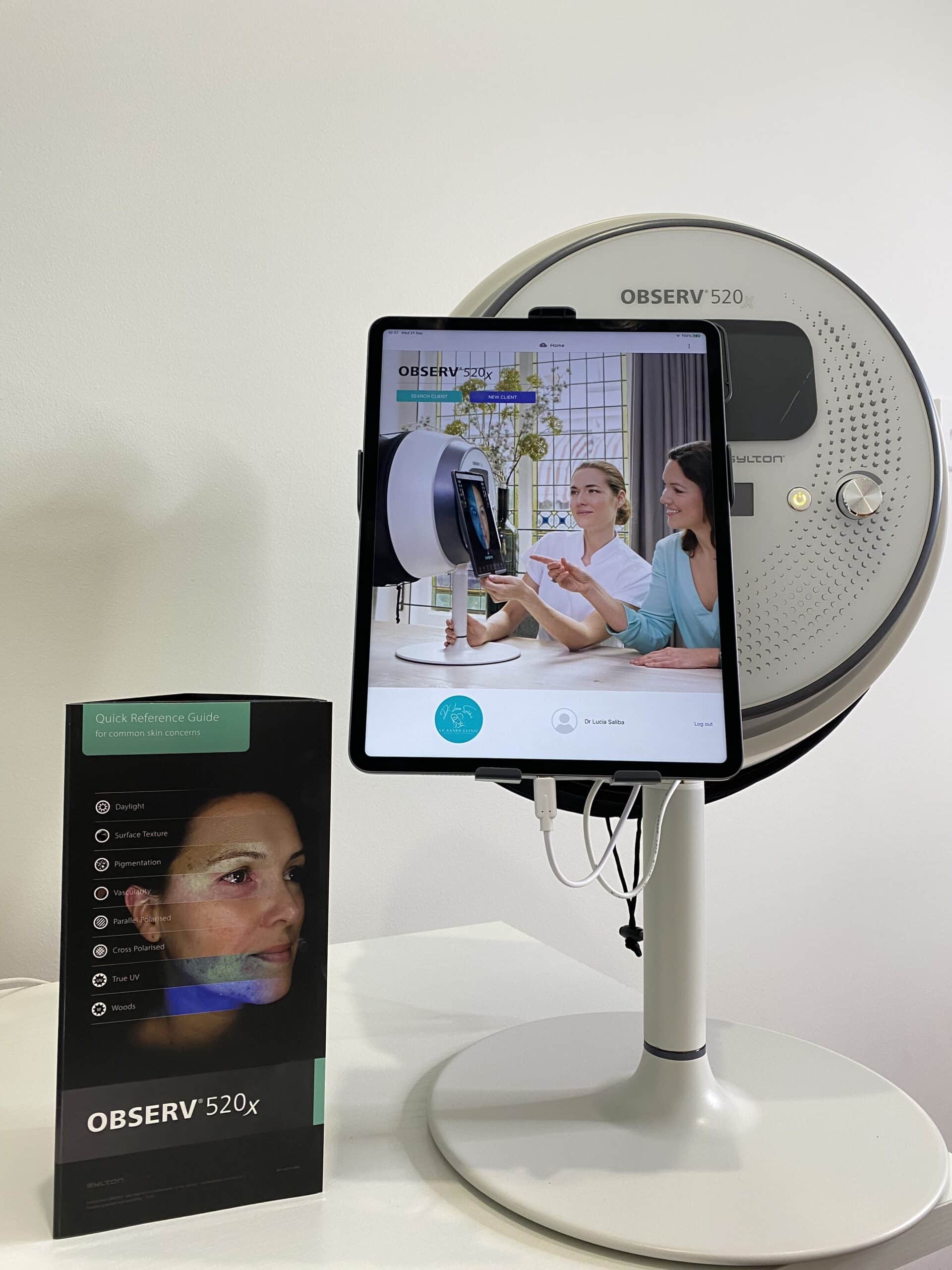
Disclaimer: Dr Luci Clinic utilises the Observ 520X skin aesthetic imaging analysis. It is not used for medical diagnoses. This image is used for illustrative purposes.
Skin Concerns: Acne and Ageing
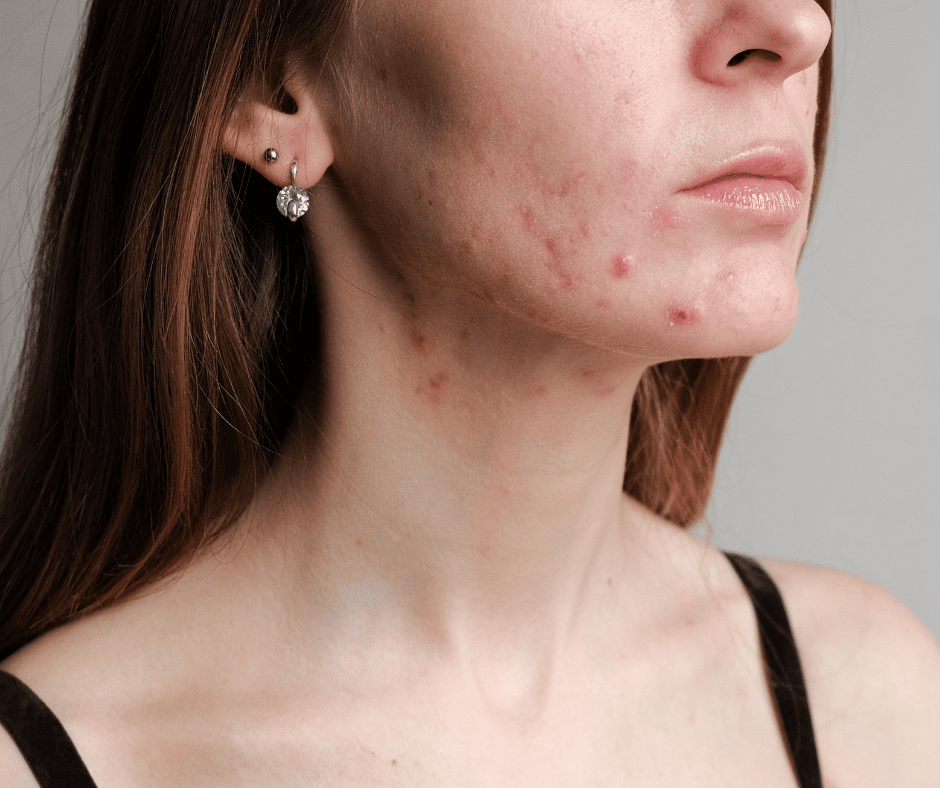
Images are for illustrative purposes only. Individual presentation and outcomes may vary.
Understanding Acne
Acne is a common skin condition that can affect individuals of all ages and often appears during adolescence, though adult-onset acne is not uncommon. It may present as whiteheads, blackheads, papules, pustules, nodules, or cysts, and in some cases, may contribute to changes in skin texture or pigmentation.
While acne is not life-threatening, it can have a significant psychological and social impact. It is important to approach treatment with sensitivity, recognising that each individual’s experience is different.
What Contributes to Acne?
Several factors are known to influence the development of acne, including:
Increased oil production by sebaceous glands (often hormonally driven)
Blocked pores due to a buildup of skin cells
The presence of certain skin bacteria
Inflammatory responses
Hormonal fluctuations such as those related to puberty or the menstrual cycle
These factors can vary between individuals and over time, which is why personalised assessment is essential.
Approach to Management
Managing acne effectively involves understanding the type and severity of the condition as well as any contributing factors. Treatment may include:
Supportive in-clinic treatments such as gentle chemical peels or light-based therapies
Medical-grade skincare designed to support skin clarity, barrier repair, and hydration
Advice around appropriate home care routines, including non-comedogenic products
Referral for medical review where prescription treatments may be appropriate
Treatment plans are developed based on a thorough clinical consultation and tailored to your skin’s individual needs. A consistent treatment schedule is typically required over a number of weeks to support visible improvements and long-term skin health.
Next Steps
If you are experiencing acne or related skin concerns, we invite you to book a consultation with our experienced team. We will conduct a clinical skin assessment and recommend an evidence-informed approach to help support your skin goals.
Note: Results may vary between individuals. Any medical treatments discussed will be subject to appropriate clinical assessment. We do not advertise or promote prescription-only medications directly to the public.
Understanding Skin Ageing
Ageing is a natural and ongoing biological process that affects all systems in the body and is particularly visible in the skin—the body’s largest organ. Both intrinsic factors (such as genetics) and extrinsic influences (such as lifestyle and environmental exposure) contribute to the appearance of ageing skin.
Factors such as sun exposure, smoking, chronic stress, poor nutrition, and dehydration may accelerate the development of visible signs of ageing.
Common Signs of Skin Ageing
Fine lines and wrinkles
Loss of skin elasticity and firmness
Volume depletion
Pigmentation and uneven skin tone
Enlarged pores and rough texture
Dull or dry skin appearance
Supporting Your Skin As It Ages
Improving the appearance of ageing skin typically requires a personalised and multi-modal approach. A clinical skin assessment will help determine the most appropriate pathway, which may include:
Home Care & Lifestyle Considerations
Minimising UV exposure
Smoking cessation
Nutritionally supportive diet and hydration
Skin-supportive topical agents or home-care regimens
In-Clinic Supportive Options
Professional-grade facials and antioxidant skincare
Light-based treatments (e.g., LED therapy)
Skin needling or resurfacing procedures
Referral for advanced treatments or medical review if appropriate
Note: Some treatment types or products may only be suitable following a consultation with a registered health practitioner.
Next Steps
If you are concerned about the visible signs of ageing, we welcome you to arrange a consultation with our team. We will assess your skin, discuss your goals, and outline evidence-informed options to support your individual skin journey.
Note: Results vary between individuals. Any medical or prescription-based treatments discussed will only be offered following appropriate clinical assessment. Initial consultations are obligation-free. T&Cs apply.
Image for illustrative purposes only. Individual results will vary. No outcomes are guaranteed.
Dark circles refer to areas of darker pigmentation affecting the upper or lower eyelids. These can contribute to a tired appearance and are a common aesthetic concern.
While not medically harmful, some individuals may find the condition distressing due to its visual impact.
What Contributes to Dark Circles?
The exact cause of dark circles varies between individuals. Factors may include:
Genetic predisposition
Age-related volume loss or thinning of skin
Dehydration and poor sleep
Sun exposure
Underlying pigmentation or vascular visibility due to thin skin
An individualised clinical assessment is key to understanding contributing causes and selecting suitable treatment options.
Approach to Management
Because the skin around the eyes is delicate, management should be approached conservatively and tailored to individual needs. Options may include:
Home Care Considerations
Adequate hydration and sleep
Gentle skincare and sun protection
Cosmetic camouflage with appropriate makeup
In-Clinic Options
Light-based therapies (e.g., LED)
Targeted peels or resurfacing treatments
Advanced aesthetic treatments following clinical review
Note: Certain treatment types may only be suitable following consultation with a registered health practitioner. Prescription-based treatments are not advertised directly.
Next Steps
If you’re concerned about pigmentation or dark circles around the eyes, our experienced team can assist with a personalised consultation and assessment. We’ll help you understand the available options to support your goals safely and professionally.
Note: Results vary between individuals. No guarantees are offered or implied. Initial consultations are obligation-free. T&Cs apply.
Understanding Dry Skin
Dry skin is characterised by a lack of moisture in the outer skin layer, leading to roughness, flaking, or irritation. In more severe cases, it may appear red, cracked, or itchy.
Dryness can be present at any age, but is more commonly observed in mature skin due to reduced oil production and barrier function. Mild dry skin is very common and often manageable with appropriate care.
What Contributes to Dry Skin?
A variety of factors can contribute to dry skin, including:
Reduced hydration and barrier function
Environmental exposure (e.g., wind, heat, cold, air conditioning, air travel)
Harsh skincare ingredients or over-cleansing
Underlying skin conditions (e.g., eczema, dermatitis, psoriasis)
Age-related changes or the side effects of some medications
Digital imaging under ultraviolet and other light skin analysis image shown for educational and assessment purposes only
Approach to Care and Management
Effective care begins with identifying individual factors contributing to dryness. Options may include:
Home Care Considerations
Adequate hydration and a nutritionally balanced diet
Use of fragrance-free, lipid-replenishing skincare
Avoiding irritants and harsh soaps
Supportive supplementation (to be reviewed with a health professional)
Professional Care Options
Clinical-grade hydrating facials or barrier repair treatments
Light-based therapies such as LED
Targeted resurfacing or needling procedures (case-dependent)
Referral for medical review where prescription treatment may be appropriate
Note: Some treatment types may only be offered following consultation with a registered health practitioner.
Next Steps
If dry skin is affecting your comfort or skin health, our experienced team can assist through a clinical skin assessment and individualised care plan. We will work with you to explore supportive options for improving hydration and restoring barrier integrity.
Note: Initial consultations are obligation-free. Results vary between individuals. T&Cs apply.
Illustrative visualisation only. Individual results vary. No specific outcome is implied or guaranteed.
Understanding Jowls
Jowls refer to the sagging or softening of tissue along the lower cheeks and jawline. This change may be accompanied by lines extending from the mouth (commonly referred to as marionette lines) and a general reduction in lower face contour or firmness.
These changes are typically associated with the natural ageing process and may be influenced by volume loss, skin laxity, and shifts in underlying soft tissue.
Contributing Factors
Factors commonly associated with the development of jowls include:
Natural ageing and collagen reduction
Volume depletion
Skin laxity and reduced elasticity
Downward migration of soft tissue and fat pads
A personalised assessment helps determine the contributing factors in each individual.
Supportive Options
The most appropriate approach will depend on the degree of skin laxity, facial volume, and individual preferences. A combination of supportive strategies may include:
In-Clinic Treatments
Non-invasive light-based therapies (e.g., Laser Genesis)
Skin stimulation techniques such as microneedling or resurfacing
Referral for surgical review if clinically appropriate
Prescription-based treatments, if required, are only offered following medical consultation
Note: Prescription-only cosmetic injectables are not promoted to the public and are only discussed during individual clinical assessment.
Next Steps
If changes to the jawline or lower face are a concern, our team is available for a thorough consultation. We’ll assess your skin, medical history, and goals to provide a personalised and evidence-informed care plan.
Initial consultations are obligation-free. Treatment outcomes vary between individuals. T&Cs apply.
Understanding Melasma
Melasma, sometimes referred to as “chloasma” or “the mask of pregnancy,” is a common pigmentary condition primarily seen in women of childbearing age. It presents as irregular patches of pigmentation, most commonly on the face—including the cheeks, forehead, upper lip, and chin.
While not medically harmful, the condition may be a cosmetic concern for some individuals.
How Is Melasma Different from General Pigmentation?
Melasma is typically a chronic condition with varying presentations:
Epidermal melasma appears as light to dark brown patches and tends to be more responsive to topical management.
Dermal melasma appears grey or blue-brown and involves deeper skin layers, often requiring more targeted interventions.
Mixed melasma includes characteristics of both.
Clinical evaluation helps determine the type and informs appropriate management strategies.
What Contributes to Melasma?
Melasma has multiple contributing factors, which may include:
UV exposure and sun damage
Hormonal fluctuations (e.g., pregnancy, oral contraceptive use)
Certain medications
Heat and environmental exposure
Genetic predisposition and skin type
The condition is more prevalent in individuals with medium to darker skin tones and is commonly triggered by sun exposure and hormonal shifts.
Approach to Management
Melasma requires a conservative and consistent approach, often over extended timeframes. UV avoidance is fundamental to managing melasma and includes:
Daily use of broad-spectrum sunscreen
Protective clothing and hats
Avoiding heat exposure where possible
Treatment strategies may involve:
Supportive Skincare & In-Clinic Treatments
Gentle, supportive skincare
Medical-grade chemical peels
Light-based therapies (e.g., LED or Laser Genesis)
Skin needling or resurfacing techniques
Topical treatments may be recommended or prescribed following clinical assessment
Note: Certain creams or agents used in melasma care may be classified as prescription-only and are not advertised directly. These options are only discussed following individual consultation with a registered practitioner.
Next Steps
Melasma management requires professional assessment and a tailored treatment approach. Our experienced clinical team can guide you through a safe, evidence-informed plan that considers your skin type, goals, and contributing factors.
Initial consultations are obligation-free. Results vary between individuals. T&Cs apply.
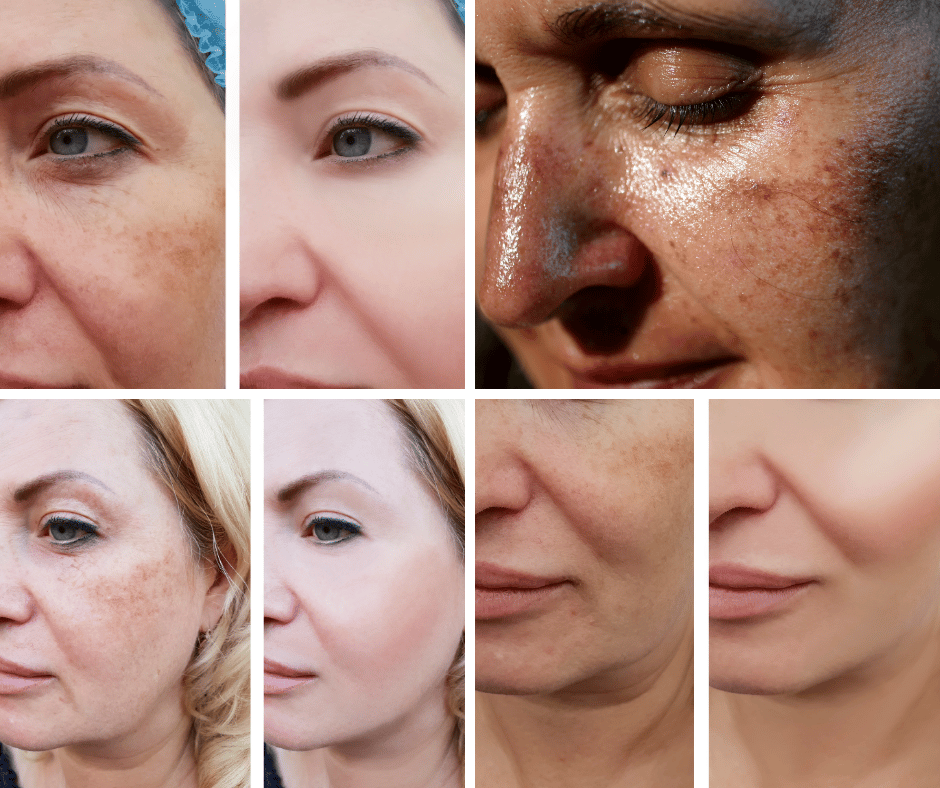
The image is for illustrative and educational purposes only and does not imply a guarantee of treatment success or otherwise
What Is Pigmentation?
Pigmentation refers to the natural colouring of the skin, which is primarily determined by melanin—a pigment produced by specialised cells called melanocytes. Other pigments, such as haemoglobin (from blood), bilirubin (from the liver), certain metals, and tattoo ink, can also influence skin tone. Pigmentation changes can result in areas of the skin appearing lighter or darker and may occur due to increased melanin, reduced melanin, or melanin appearing in unexpected locations.
For many people, changes in pigmentation can affect how they feel about their skin’s appearance.
What Are the Different Types of Pigmentation?
Melanin production is influenced by a number of factors, including sun exposure. For example, ultraviolet (UV) light stimulates melanin production as a protective mechanism, leading to tanning.
Pigmentation can occur in the outer layer of the skin (epidermis), deeper layers (dermis), or both. The depth of the pigmentation may influence how it responds to treatment.
Common pigmentation concerns include:
Solar lentigos (commonly known as sun spots or liver spots): Usually appear on sun-exposed areas like the face and hands, particularly in individuals over 50.
Freckles (ephelides): Typically more pronounced with sun exposure.
Pigmented contact dermatitis (Riehl’s melanosis): May occur in response to certain cosmetic products.
Post-inflammatory hyperpigmentation (PIH): Can follow skin conditions such as acne, eczema, or after skin trauma including burns or procedures.
Melasma: A complex form of pigmentation that can be challenging to manage. Often associated with hormonal changes such as pregnancy.
Other causes: May include scarring, some medications, and chemical exposure.
What Causes Pigmentation?
Skin pigmentation can result from a variety of causes. UV exposure is a major factor, but other influences include genetics, hormonal changes, inflammation, trauma, and certain chemical exposures. Each person’s skin responds differently, and pigmentation can appear in various forms and intensities.
What Treatments Are Available?
Accurately identifying the type and underlying cause of pigmentation is important when considering treatment options. A gentle, realistic, and consistent approach is often the most effective. It’s also essential to protect the skin from further UV damage by using broad-spectrum sunscreen and avoiding prolonged sun exposure.
At Dr Luci Clinic, we offer a range of treatment options tailored to individual skin assessments. These may include:
Topical lightening agents
Professional skin care routines (in-clinic and at-home)
Medical-grade peels
Microneedling*
Non-invasive laser treatments (e.g., Laser Genesis)*
LED light therapy (e.g., Omnilux)*
Please note: All devices used are TGA-listed and treatments are administered by trained professionals. Suitability and expected outcomes vary between individuals and are discussed during your clinical consultation.
What Should I Do Next?
If you’re concerned about skin pigmentation, we recommend booking a consultation with one of our trained practitioners. During your assessment, we’ll explore the underlying causes of your pigmentation and recommend a treatment plan tailored to your skin’s needs.
To make an appointment or learn more, please contact our clinic on (02) 9567 0399.
* used under clinical supervision in accordance with TGA regulations.
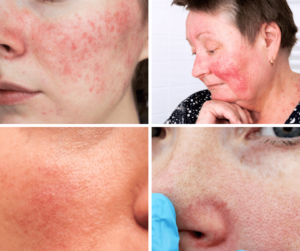
The images displayed are for educational and illustrative purposes only. Individual treatment outcomes may vary, and no outcome is guaranteed.
What Is Rosacea?
Rosacea is a long-term skin condition that typically presents with persistent facial redness, visible blood vessels, and sometimes small bumps or pustules. Other features can include skin sensitivity, dryness, burning or stinging sensations, and—in some cases—thickened skin or changes around the eyes.
It most often affects people between 30 and 50 years of age and is more common in individuals with fair skin. While both men and women may be affected, some forms are more frequently seen in women.
What Are the Different Types of Rosacea?
Rosacea is classified into four main subtypes:
Subtype 1 – Erythematotelangiectatic Rosacea: Characterised by central facial redness and visible superficial blood vessels.
Subtype 2 – Papulopustular Rosacea: Involves red bumps and pustules, often mistaken for acne.
Subtype 3 – Phymatous Rosacea: Thickened and bumpy skin, usually affecting the nose.
Subtype 4 – Ocular Rosacea: Involves eye symptoms such as dryness, irritation, or eyelid changes.
The condition can vary significantly between individuals and may progress without appropriate management. Early assessment is recommended to support long-term skin health.
What Causes Rosacea?
The exact cause of rosacea is not yet fully understood. However, several contributing factors have been identified, including:
Sun exposure
Genetic predisposition
Flushing, heat, alcohol, and spicy foods
Skin sensitivity
Microorganisms (e.g., mites or bacteria)
These triggers can vary from person to person, and managing rosacea often includes identifying and avoiding aggravating factors.
What Treatments Are Available?
Rosacea management is individualised, as no single treatment suits everyone. Although there is no known cure, a combination of strategies can help control symptoms and reduce flare-ups.
Self-Care Strategies:
Daily use of broad-spectrum sunscreen
Gentle skin care practices
Avoiding known personal triggers
Treatment Options Available at Dr Luci Clinic:
Anti-inflammatory oral supplements
Soothing, low-irritant skincare products
Light chemical peels (where appropriate)
Microneedling (based on clinical assessment)
Prescription topical or oral medications (e.g., antibiotics)
Omnilux LED light therapy
Laser treatments (for redness and visible vessels)
All procedures and technologies used are TGA-listed and performed under the direction of trained health practitioners.
What Should I Do Next?
If you’re experiencing symptoms of rosacea or facial redness, we recommend scheduling a consultation for a personalised skin health assessment. At Dr Luci Clinic, your practitioner will evaluate your skin, medical history, and concerns to develop a tailored care plan.
📞 Call us on (02) 9567 0399 to book a consultation and begin your journey toward clearer, calmer skin.
This image is intended for educational purposes only. It does not represent actual patient outcomes. Results vary between individuals, and no guaranteed results are implied
What Is Sagging Skin?
Sagging skin is a natural part of the ageing process. It often appears along the jawline, around the eyes, mouth, and cheeks, and is linked to changes in skin structure over time.
What Causes Sagging Skin?
As we age, the skin’s internal support system—collagen, elastin, and hyaluronic acid—begins to diminish. This can lead to reduced skin firmness and volume. Other contributing factors include:
Genetics
Chronic sun exposure
Smoking
Illness
Certain lifestyle choices
These elements can work together to gradually change facial contours and contribute to the appearance of lines, hollowness, and less skin elasticity.
What Treatments Are Available?
Effective treatment for sagging skin begins with an individualised assessment. Addressing both the underlying causes and your personal skin goals helps us tailor a comprehensive treatment approach.
Self-Care Strategies:
Daily use of broad-spectrum sunscreen
Avoiding smoking and other modifiable lifestyle factors
Using quality skincare to support hydration and skin renewal
Treatment Options at Dr Luci Clinic:
We offer several non-surgical interventions that may help improve skin texture and firmness, including:
Medical-grade chemical peels
Skin care programs to support hydration and collagen synthesis
Microneedling to encourage natural collagen production
Non-ablative laser treatments (e.g., Laser Genesis)
LED light therapy (e.g., Omnilux)
For eligible patients, a consultation with a prescribing practitioner may also explore cosmetic procedures involving muscle relaxants or dermal fillers—used to support underlying structures and promote collagen over time.
All technologies and devices are TGA-listed and used in accordance with current clinical standards under professional supervision. Individual outcomes will vary.
What Should I Do Next?
A detailed consultation is the first step toward understanding the changes in your skin and exploring suitable treatment pathways. At Dr Luci Clinic, we conduct a thorough skin and health assessment before offering any recommendations.
📞 To arrange your initial consultation, please call (02) 9567 0399 or reach us via email at info@drluci.com.au.
Scarring And Stretch Marks
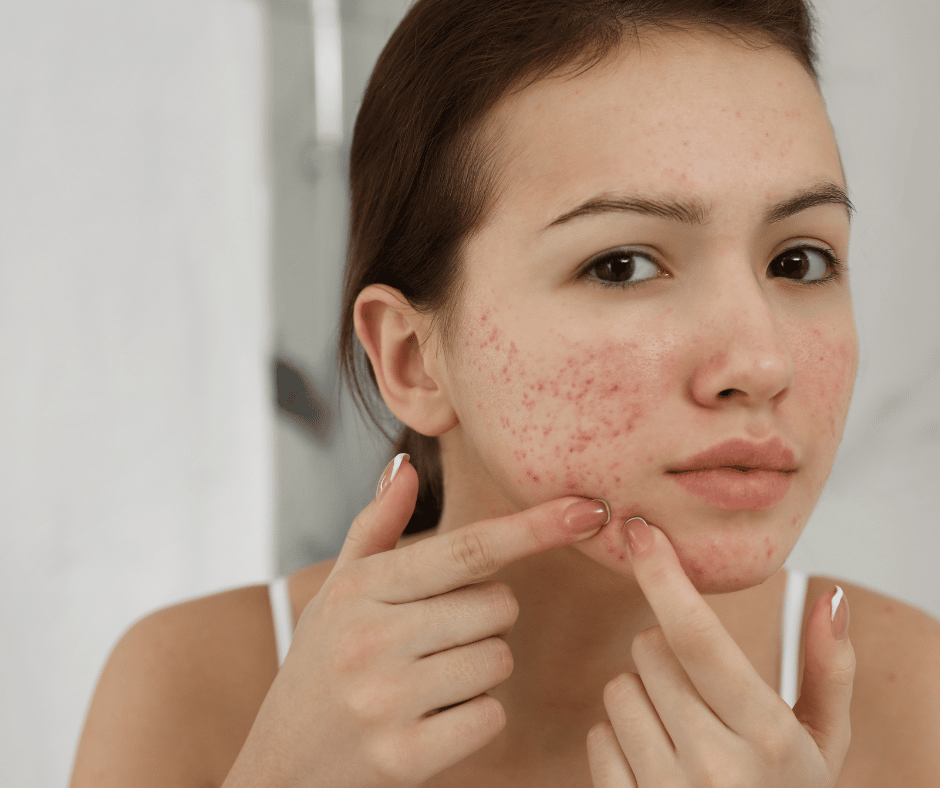
The image is provided for illustrative purposes only and does not depict a treatment result. Individual skin responses and outcomes vary.
Scarring and Stretch Marks
Scarring is a natural part of the body’s healing process. Everyone develops scars—our first typically being the umbilical scar at birth. Over time, people may experience various types of scarring, some of which may be more noticeable or persistent.
Before considering treatment, it’s important to understand the type of scar and ensure that the area has healed adequately.
Types of Scarring
Scars vary in appearance and structure, which affects how they may respond to treatment:
Hypertrophic Scars: Raised scars caused by excess collagen, typically forming 4–8 weeks after injury.
Keloid Scars: Thick, raised areas of scar tissue that extend beyond the original injury site. Often seen after acne, surgery, piercings, or trauma. These are harmless but may feel itchy or sensitive.
Atrophic Scars: Depressed or pitted scars due to loss of underlying tissue, often seen in acne scarring, chickenpox, or injury.
Stretch Marks (Striae): These develop when skin stretches rapidly, such as during pregnancy, growth spurts, or significant weight changes.
What Causes Scars?
Scars form as the body repairs damaged skin. Factors such as the nature of the injury, individual healing response, skin type, and lifestyle habits (e.g., smoking) all influence how a scar develops.
Scars may fade significantly over time, though some remain visible. Differences in collagen distribution and reduced elasticity may contribute to more prominent scarring.
What Treatments Are Available?
A personalised treatment plan should always be based on the type of scar, the time since injury, and individual goals. At Dr Luci Clinic, we offer several non-surgical options that may help improve scar appearance:
Medical-grade chemical peels
Non-ablative laser treatments (e.g., Laser Genesis)
CO₂ laser resurfacing (TGA-listed technology)
Microneedling for collagen stimulation
All treatments are conducted by trained professionals following clinical evaluation. Outcomes may vary, and results depend on factors like skin type, scar age, and overall skin health.
What Should I Do Next?
To determine the most appropriate approach, we recommend booking a consultation with a qualified practitioner at Dr Luci Clinic. During your appointment, we will assess the type and cause of scarring, review your medical history, and provide a treatment plan tailored to your needs.
📞 Call us on (02) 9567 0399 or email info@drluci.com.au to make an appointment.
Sun Damage
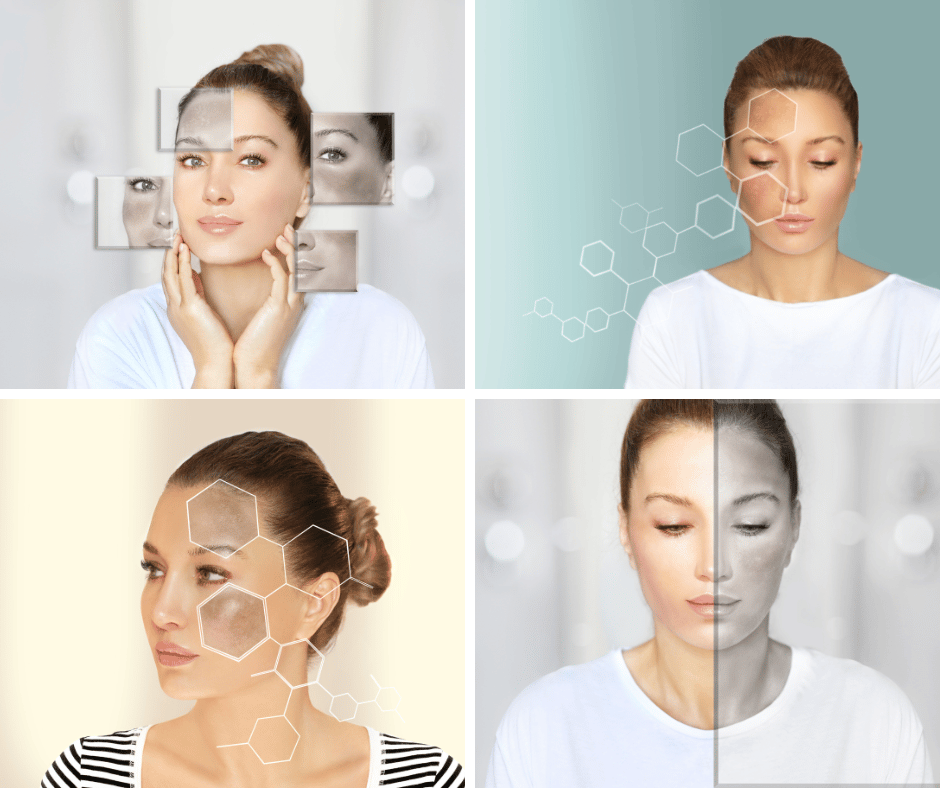
The images on this page are for illustrative purposes only and do not reflect actual patient outcomes. Individual results vary and no outcomes are guaranteed.
🌤 Understanding Skin Ageing and Sun Damage
Skin ageing is a natural process influenced by two key factors:
Intrinsic (internal) – genetically determined and largely outside our control
Extrinsic (external) – related to environment and lifestyle, including sun exposure, smoking, stress, poor nutrition, and alcohol use
In Australia, UV exposure is a major contributor to premature skin ageing, accounting for up to 80% of visible changes. Although a tan may be culturally perceived as a sign of health, long-term UV damage can lead to structural and functional changes in the skin.
🧬 What Happens to Skin with Age and Sun Exposure?
Prolonged exposure to sunlight accelerates:
Breakdown of collagen and elastin – leading to reduced firmness and elasticity
Loss of glycosaminoglycans (e.g., hyaluronic acid) – which help retain skin moisture
Formation of pigment irregularities – such as freckles, sunspots, and blotchy tone
Development of visible blood vessels (telangiectasias) – due to capillary fragility
Impaired skin repair – slowing regeneration of healthy new cells
Free radicals generated by UV light, pollution, and stress further degrade the skin’s supportive structures and can contribute to visible signs of ageing.
🔍 Common Effects of Cumulative Sun Exposure
Fine lines and wrinkles
Uneven or patchy pigmentation
Dullness and textural roughness
Redness, visible vessels, and cherry angiomas
Skin laxity
Development of non-cancerous lesions (e.g., seborrheic keratoses, skin tags)
Increased susceptibility to skin cancer, including melanoma
💡 What Can Be Done?
Managing sun damage requires a combination of prevention, assessment, and professional care.
🧴 Self-Care and Prevention
Daily use of broad-spectrum sunscreen (SPF 50+)
Avoid direct sun between 10 am–4 pm
Wear UV-protective clothing and wide-brimmed hats
Avoid tanning beds and deliberate sun exposure
Maintain skin health through balanced nutrition and hydration
🏥 Professional Skin Therapies at Dr Luci Clinic
A tailored plan is developed following a comprehensive consultation and may include:
Medical-grade chemical peels – to refresh surface layers and promote cell turnover
Antioxidant-based skin care and active cosmeceuticals – to support skin defence
Laser treatments and IPL – to manage pigmentation and stimulate collagen
Microneedling – to promote skin renewal and firmness
Injectables (if suitable) – such as muscle relaxants or dermal volumisers, considered only after a formal clinical assessment by a prescribing practitioner
Minor surgical removal of benign skin lesions, where indicated
Please note: All technologies are TGA-listed and used under appropriate medical supervision. Individual suitability, outcomes, and treatment requirements will vary.
📋 What Should I Do Next?
We recommend a detailed skin consultation to assess UV-related changes and develop an appropriate care plan.
📞 Call (02) 9567 0399 or email info@drluci.com.au to arrange a consultation at our Caringbah clinic.
Tattoo Regret
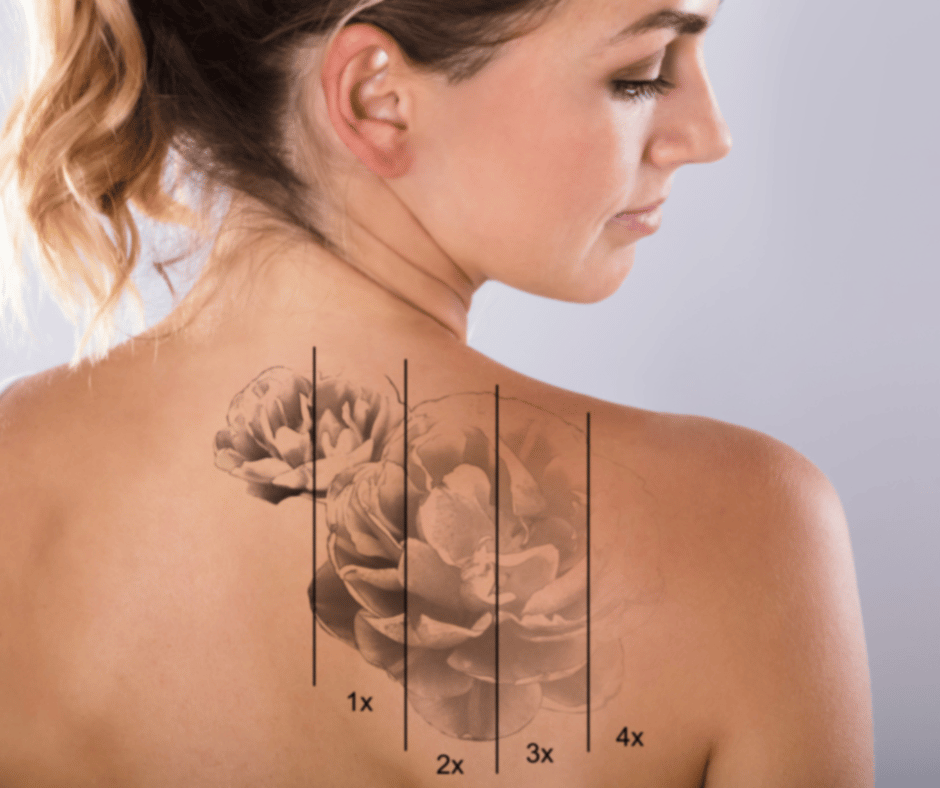
The image shown is for illustrative purposes only and does not depict a specific patient result. Individual results vary based on skin type, tattoo characteristics, and other factors.
Why Do People Remove Tattoos?
Tattoos can represent personal stories, identities, or milestones. While many people remain satisfied with their tattoos, individual preferences, career needs, or personal circumstances may change over time, leading some to seek removal.
How Are Tattoos Removed?
Tattoo removal today is most commonly performed using medical-grade laser technology. Lasers target specific pigments in the tattoo ink, fragmenting the particles into smaller components. These fragments are gradually eliminated by the body’s lymphatic system.
Factors that influence treatment response include:
Colour and type of ink used
Depth and density of pigment
Location on the body
Age of the tattoo
Individual skin characteristics and immune response
Multiple sessions are typically required. During your consultation, we assess your tattoo and discuss what results may be achievable in your case.
Our Technology
At Le Sands Clinic, we use TGA-listed laser devices for tattoo removal. Treatments are performed under clinical protocols by trained staff following a thorough skin and health assessment.
What Should I Expect?
A personalised treatment plan is developed after assessing your skin, tattoo composition, and overall health. We’ll outline expected outcomes, potential risks, and aftercare during your initial consultation.
📞 To book your consultation, contact Dr Luci Clinic at (02) 9567 0399 or email info@drluci.com.au.
Wrinkles And Fine Lines
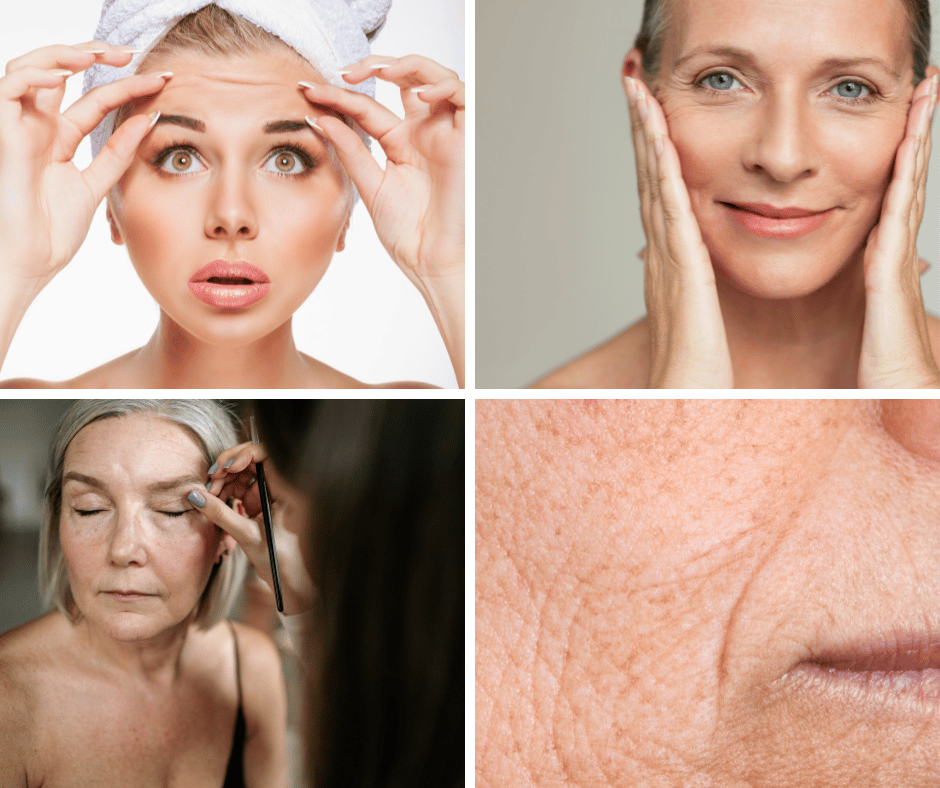
The images displayed are for illustrative purposes only and do not reflect actual patient outcomes. Individual responses to treatment vary.
Understanding Wrinkles and Fine Lines
Fine lines and wrinkles are a natural part of the ageing process. They often begin as temporary expression lines, eventually becoming more permanent as skin structure changes over time. For some individuals, deeper lines—such as frown lines or lines around the mouth—can contribute to a tired or less refreshed appearance.
What Contributes to Wrinkle Formation?
Wrinkles and fine lines develop due to a combination of internal and external factors, including:
Repeated facial expressions and muscle activity
Age-related decline in collagen, elastin, and hyaluronic acid
Genetic predisposition
Chronic sun exposure
Smoking and other lifestyle influences
Dehydrated or poorly maintained skin
These changes reduce skin elasticity and firmness, increasing the visibility of lines.
What Treatments Are Available?
At Dr Luci Clinic, we provide personalised treatment plans based on your skin type, underlying factors, and goals. Treatment options may include:
Self-Care and Prevention
Daily use of SPF 50+ broad-spectrum sunscreen
Avoiding smoking and maintaining good hydration
Using professionally recommended skincare to support skin renewal
In-Clinic Options
Medical-grade peels – assist in resurfacing the upper layers of the skin and improving texture
Microneedling – promotes natural collagen production to support skin firmness
Laser Genesis – stimulates dermal repair and may help reduce uneven skin tone
LED light therapy – supports skin healing and regeneration
Injectables (if clinically appropriate) – treatments such as muscle relaxants or dermal fillers may be offered following consultation with a qualified prescribing practitioner. These aim to soften expression lines and support collagen renewal over time.
All treatments use TGA-listed technologies and are administered under professional supervision in accordance with current clinical guidelines.
What Should I Do Next?
A comprehensive consultation is the first step in developing a tailored approach to support your skin health. We assess contributing factors, medical history, and personal preferences to ensure any recommended treatments are safe and appropriate.
📞 To arrange a consultation, please contact Dr Luci Clinic at (02) 9567 0399 or email us at info@drluci.com.au.
Topical Steroid Withdrawal (TSW) is a recognised and complex skin condition that should be managed under medical supervision. For patients seeking more information about TSW, we encourage reading our practitioner-authored blog that explores common symptoms, care strategies, and available support pathways.
📖 read our blog here
Note: This blog is for general informational purposes only and does not replace medical advice. Please speak with a qualified health practitioner to discuss your individual situation.

This image is for illustrative purposes only and not indicative of treatment outcomes
Body Concerns
Your Breast Health
Dr Lucia Saliba has a special interest in breast health and offers comprehensive medical care for individuals requiring breast-related procedures. This includes consultations, surgical interventions, and post-operative care. Services encompass breast reconstruction, symmetry procedures in conjunction with breast cancer surgery, and cosmetic surgeries such as augmentation, mastopexy (breast lift), and reduction.
Maintaining breast health is an essential aspect of overall well-being. Regular self-examinations and awareness of any changes are recommended.
Healthy lifestyle choices that support general health include:
Engaging in regular physical activity
Consuming a balanced diet rich in fruits, vegetables, and whole grains
Avoiding tobacco use
Limiting alcohol consumption
It’s important to consult with a healthcare professional for personalized advice.
For women aged between 50 and 69, routine mammograms every 2 to 3 years are recommended as part of standard breast health screening.
Why Is Breast Health Important?
Our goal is to provide comprehensive care that addresses both the physical and emotional aspects of breast health. We understand that individual needs vary, and we strive to offer personalized treatment plans that align with each patient’s circumstances and preferences.
Breast Reduction Options
Dr Saliba offers breast reduction procedures tailored to individual needs. A thorough consultation will determine the most appropriate approach, considering medical history and personal goals.
Next Steps
If you have concerns about your breast health or are considering surgical options, please contact us to schedule a consultation.
📞 Call 1300 255 185 or email info@drluci.com.au to book your appointment.
Facial Changes After Weight Loss
Significant weight loss—whether due to medical treatment, lifestyle change, or surgery—can affect the appearance of the face and body. For some individuals, this includes changes in skin firmness, facial volume, and texture.
At Dr Luci Clinic, we assess each patient individually to determine if aesthetic concerns following weight loss may benefit from clinical intervention. Treatment options may support skin renewal, firmness, and facial balance when appropriate.
Commonly Considered Treatments May Include:
Laser therapies to promote dermal rejuvenation
Medical-grade skincare tailored to hydration and elasticity
Microneedling or skin tightening modalities (based on clinical evaluation)
Injectables (e.g., dermal fillers or muscle relaxants), considered only after consultation with a qualified prescribing practitioner
All treatments are performed using TGA-listed devices under appropriate clinical supervision. Results vary between individuals and depend on many factors including skin type, treatment response, and health status.
Broken Facial Capillaries
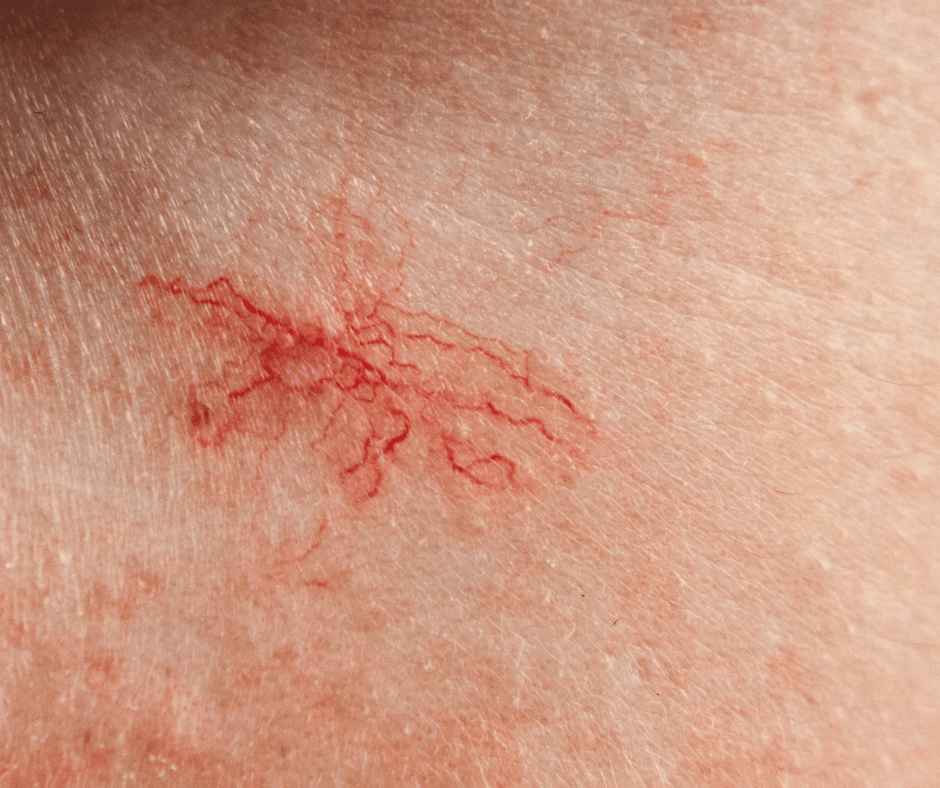
The image shown is for illustrative purposes only and does not reflect an individual clinical outcome. Treatment suitability and results vary.
What Are Broken Capillaries?
Broken capillaries (also known as telangiectasias) are small, dilated blood vessels that appear close to the skin’s surface, often presenting as red or purple lines. While not typically harmful, they may be a cosmetic concern for some individuals.
What Causes Broken Facial Capillaries?
Several factors can contribute to the appearance of broken capillaries, including:
Rosacea or other chronic inflammatory skin conditions
Prolonged sun exposure
Environmental or temperature extremes
Genetic predisposition
Pregnancy or hormonal changes
Trauma or pressure to the skin
Certain medications or medical treatments
Alcohol consumption
Understanding the underlying cause is essential in determining the most appropriate management approach.
Treatment Options
At Dr Luci Clinic, a personalised treatment plan is developed following a comprehensive skin assessment. For suitable candidates, treatment may include:
Laser Genesis – a non-invasive laser modality that targets vascular irregularities and promotes more even skin tone.
All treatments are conducted using TGA-listed technology and administered under clinical protocols by trained professionals. Outcomes vary depending on skin type, severity, and contributing factors.
What Should I Do Next?
Managing visible capillaries begins with a clinical consultation to determine potential triggers and rule out underlying conditions. At Dr Luci Clinic, our team offers tailored care plans to help you achieve healthier-looking skin.
📞 To book a consultation, please call (02) 9567 0399 or email us at info@drluci.com.au.
Double Chin (Submental Fullness)
This page is currently under development. The image shown is for illustrative purposes only and does not reflect individual patient results. Treatment outcomes vary.
Understanding Submental Fullness
A double chin—clinically referred to as submental fullness—can develop due to a combination of genetic predisposition, ageing, and weight distribution. While not a medical concern, it may affect facial profile and self-perception for some individuals.
What Contributes to a Double Chin?
Several factors may lead to the appearance of a double chin:
Genetics and family traits
Age-related changes in skin elasticity
Fat accumulation beneath the chin
Posture and muscle tone
These factors may affect the contour and definition of the lower face and neck.
What Treatment Options May Be Considered?
At Dr Luci Clinic, we offer a personalised approach to facial aesthetic concerns, including submental fullness. After a thorough consultation, we may discuss appropriate non-surgical options such as:
Laser or energy-based treatments – to assist with skin tightening and contour refinement
Injectables (where appropriate) – following clinical assessment, some patients may be eligible for prescription-based treatments to reduce fat or improve structure
Skin firming modalities – to support collagen and skin elasticity
Lifestyle advice and postural guidance – to complement clinical therapies
All technologies used are TGA-listed and administered under medical supervision in accordance with current practice guidelines. Suitability varies and not all individuals will be candidates for these treatments.
What Should I Do Next?
We recommend a clinical consultation to assess your individual concerns, health history, and suitability for treatment. A personalised care plan will be discussed based on your goals and needs.
📞 To arrange your consultation, please call (02) 9567 0399 or email info@drluci.com.au.
Excessive Hair
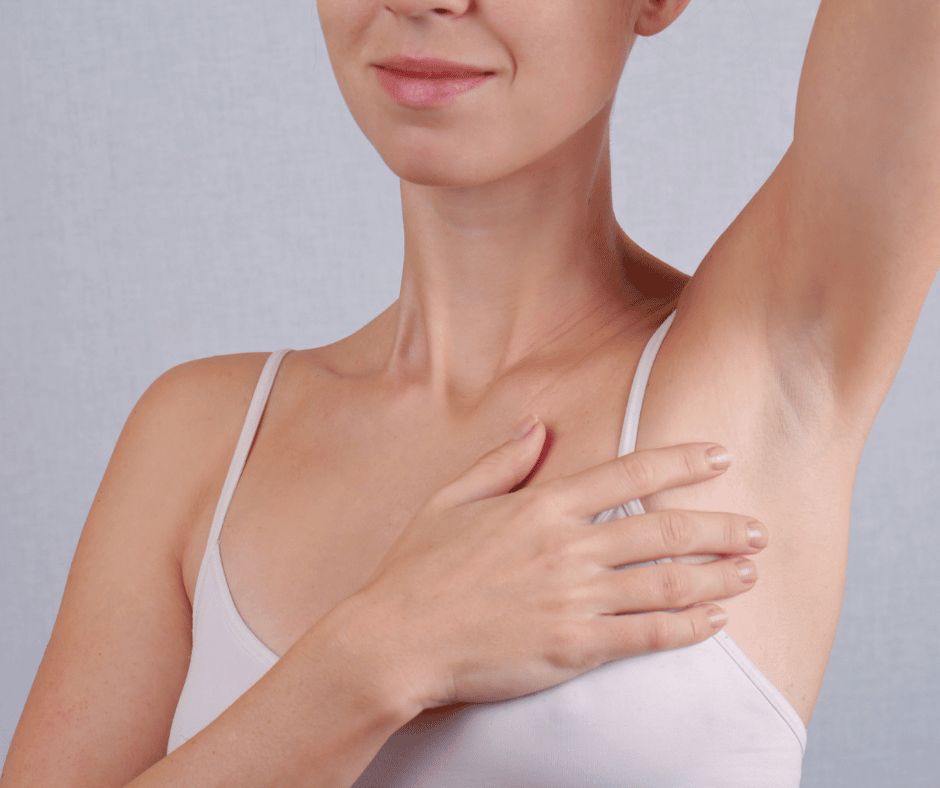
The image shown is for illustrative purposes only and does not depict individual clinical outcomes. Results vary depending on skin and hair type, underlying health factors, and treatment protocols.
Excessive or Unwanted Hair Growth
The image shown is for illustrative purposes only and does not depict individual clinical outcomes. Results vary depending on skin and hair type, underlying health factors, and treatment protocols.
Understanding Excessive Hair Growth
Excessive or unwanted hair growth—clinically referred to as hirsutism—can affect individuals of all ages and may involve dark, coarse hair appearing in areas typically more common to male-pattern growth. While not usually medically harmful, hirsutism can be distressing and impact confidence and quality of life.
What Causes Hirsutism?
Hirsutism can be influenced by a range of factors including:
Hormonal changes (e.g., elevated androgens or testosterone)
Polycystic Ovary Syndrome (PCOS) or other endocrine conditions
Certain medications (e.g., corticosteroids, anabolic steroids)
Genetics and family history
Some metabolic or systemic conditions
Assessment by a healthcare professional is recommended to explore underlying causes.
The Hair Growth Cycle
Hair grows in a cyclical process involving three key phases:
Anagen – the active growth phase, lasting months to years depending on genetics
Catagen – a brief transitional phase, where growth slows (lasting ~2–4 weeks)
Telogen – the resting phase before shedding, leading to the natural loss and regrowth of hair
Laser hair removal is most effective during the anagen (active growth) phase, which is why multiple sessions are typically required for optimal results.
Treatment Options
At Dr Luci Clinic, we use TGA-listed medical laser systems to safely and effectively reduce unwanted hair. Treatment plans are tailored to your skin and hair type, underlying conditions, and personal goals. A consultation ensures suitability and safety.
What Should I Do Next?
If you’re concerned about excessive or unwanted hair, a professional assessment is the first step. At Dr Luci Clinic, our experienced team will help you understand your options and develop a treatment plan that aligns with your needs.
📞 To arrange a consultation, please call (02) 9567 0399 or email info@drluci.com.au.
Breast-Related Discomfort and Reduction Surgery

The image shown is for illustrative purposes only and does not depict actual patient outcomes. Individual suitability and outcomes vary.
Understanding Breast-Related Physical Discomfort
Some individuals experience physical discomfort associated with larger breast volume, including symptoms such as:
Neck or shoulder tension
Back discomfort
Skin irritation or posture-related concerns
Breast size can be influenced by genetics, hormonal changes, body composition, and other health factors. If persistent discomfort affects your quality of life, a medical consultation is recommended to explore potential causes and appropriate care options.
Treatment Options
At Dr Luci Clinic, we offer clinical assessments to help determine whether breast reduction surgery may be a suitable option for your situation.
Where lifestyle and general health factors may contribute to body composition, these are explored as part of a holistic care plan. In cases where surgical intervention is appropriate, risks and benefits will be discussed in detail during a formal consultation.
All surgical procedures carry inherent risks and must be considered carefully with a qualified practitioner. A personalised treatment plan is developed only after medical review and assessment of your needs and health status.
What Should I Do Next?
A consultation with Dr Lucia Saliba is the first step in determining a safe and appropriate approach. Please note that initial consultations are chargeable and may attract a Medicare rebate where clinically indicated.
📞 To make an appointment at our Caringbah, Liverpool, or Campbelltown clinics, please contact us on 1300 255 185 or email info@drluci.com.au.
Lip Concerns and Aesthetic Considerations
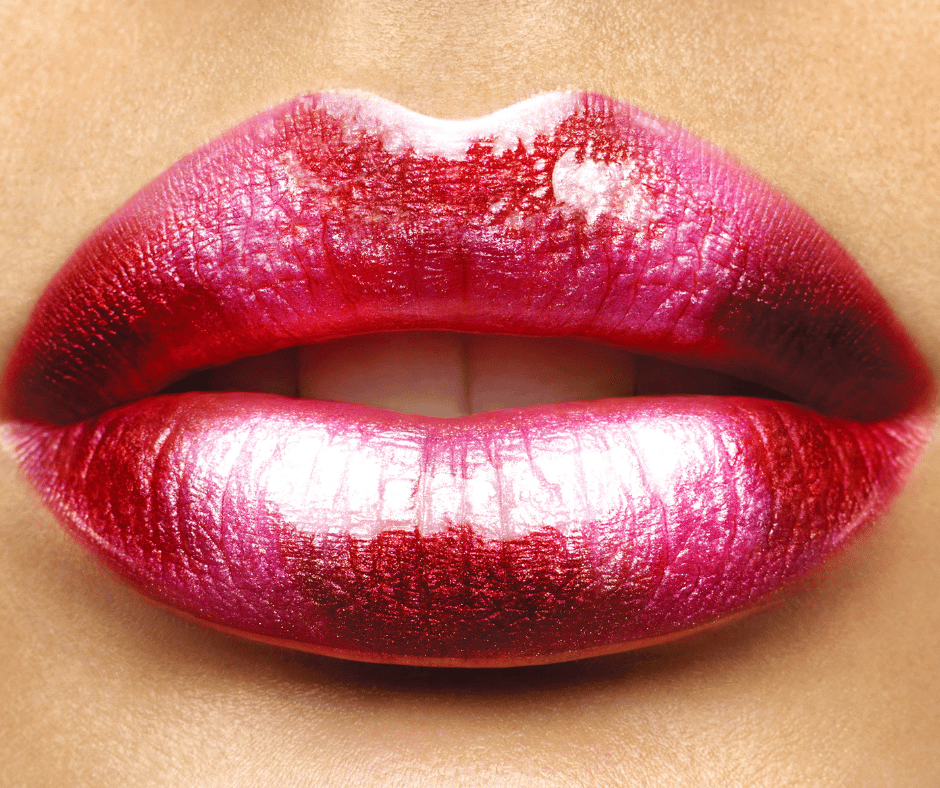
The image shown is for illustrative purposes only and does not represent actual patient results. Treatment suitability, outcomes, and responses vary.
Lip shape, volume, and symmetry can contribute to facial balance and influence how individuals perceive their own appearance. While studies have explored aesthetic preferences in lip proportions, it’s important to remember that beauty is highly individual and culturally diverse.
At Dr Luci Clinic, we approach lip concerns with a focus on anatomical precision, facial harmony, and personal goals—rather than a one-size-fits-all ideal. Each treatment plan is tailored through clinical consultation and professional assessment.
Common Lip Concerns
Individuals may seek assessment or treatment for a variety of reasons, including:
Lip asymmetry
Volume loss related to ageing
Desire for enhanced balance between upper and lower lips
Skin hydration and perioral fine lines
These concerns are approached holistically, taking into account the full facial structure and patient preferences.
What Treatments Are Available?
At Dr Luci Clinic, lip concerns may be addressed using prescription-only cosmetic injectables. These typically contain hyaluronic acid-based gels—a substance naturally found in the body—that help restore volume and definition when clinically appropriate.
All injectable treatments are only administered after a face-to-face consultation with a qualified medical practitioner, in accordance with TGA regulations.
Note: Cosmetic injectables are Schedule 4 (prescription-only) medicines and must not be advertised by brand name. No outcome is guaranteed, and individual suitability is assessed by a prescribing practitioner.
What Should I Do Next?
If you’re considering treatment to address lip volume or shape, we invite you to book a professional consultation. A comprehensive facial and health assessment is required before any injectable treatments can be prescribed or administered.
📞 Please call (02) 9567 0399 or email info@drluci.com.au to schedule your appointment.
Breast Augmentation and Individual Considerations

The image shown is for illustrative purposes only and does not represent actual patient results. Individual outcomes vary and depend on multiple clinical factors.
Considering Breast Augmentation
Some individuals may seek breast augmentation for a variety of personal reasons, which can include:
A desire for increased body symmetry or proportionality
Changes in breast volume due to weight fluctuations or ageing
Personal preference or confidence-related concerns
It is important to understand that the decision to pursue breast augmentation is highly individual and should be made in consultation with a qualified medical professional.
What Are the Options?
Breast augmentation is a surgical procedure involving the placement of medical-grade implants to increase breast volume. At Dr Luci Clinic, breast augmentation is considered only after a thorough consultation and medical assessment.
The procedure is performed in a hospital setting under general anaesthesia by a qualified surgeon. Risks, benefits, and alternatives will be discussed during your consultation.
Note: All surgical procedures carry inherent risks. Suitability can only be determined by a practitioner following medical consultation and assessment of your goals and health history.
What Should I Do Next?
If you’re considering breast augmentation, the first step is to book a consultation with Dr Lucia Saliba or a member of the surgical team. A clinical discussion will help determine whether this option is appropriate for your needs.
📞 Call 1300 255 185 or email info@drluci.com.au to schedule your appointment at our Caringbah, Liverpool, or Campbelltown clinics.
Varicose Veins, Spider Veins, and Leg Vein Concerns
This information is provided for general understanding and does not replace personalised medical advice. Outcomes vary depending on individual anatomy, the severity of the condition, and adherence to recommended careA professional consultation is required to determine individual suitability and care needs.
Understanding Leg Vein Conditions
Varicose veins and spider veins are common vascular conditions that can affect both appearance and comfort. These conditions occur when blood vessels become enlarged or twisted due to weakened vein walls or faulty valves.
While many cases are benign, some individuals may experience discomfort, swelling, or aesthetic concerns associated with visible leg veins.
Common types include:
Varicose veins – larger, raised veins that may appear twisted or bulging
Spider veins – small, thread-like red or purple veins near the skin surface
Reticular veins – bluish, flatter veins often found on the legs or behind the knees
What Causes Visible Leg Veins?
Multiple factors may contribute to the development of vein concerns, including:
Genetics and family history
Hormonal changes (e.g. pregnancy, menopause)
Prolonged standing or sedentary lifestyles
Age-related vascular changes
Obesity or weight fluctuations
Trauma or injury to the legs
A clinical evaluation is necessary to rule out underlying venous insufficiency or associated vascular conditions.
What Treatment Options Are Available?
At Dr Luci Clinic, a tailored plan is developed following a thorough medical and vascular assessment. Depending on your needs, treatment may include:
Laser therapy – may assist in improving the appearance of superficial spider veins by targeting the pigment in affected vessels
Sclerotherapy – involves the injection of a medical solution into suitable veins, causing them to collapse and fade over time
Referral to a vascular specialist – in cases where deeper venous disease or varicosities are present
All procedures are only offered after a face-to-face consultation with a qualified practitioner. Treatment options are selected based on clinical appropriateness and medical suitability.
What Should I Do Next?
If you are experiencing discomfort or are concerned about the appearance of leg veins, we recommend arranging a clinical consultation. Our team can assess your symptoms, identify underlying causes, and discuss appropriate care pathways.
📞 To schedule an appointment, please contact Dr Luci Clinic on (02) 9567 0399 or email info@drluci.com.au.

This image is for illustrative purposes only and not indicative of treatment outcomes
Opening Hours:
Monday Closed
Tuesday 9am – 5pm
Wednesday 9am – 5pm
Thursday 9am – 8pm
Friday 9am – 5pm
Saturday 9am – 5pm
Phone: 02 9567 0399
Email: info@drluci.com.au


